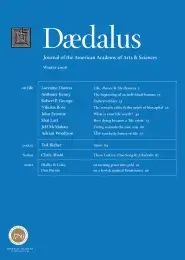The synthetic future of life
In 1540, the German cartographer Sebastian Münster published the first accurate map of the African subcontinent. Contrary to the Ptolemaic view– in which Africa, Antarctica, and part of Asia formed a single southern landmass known as Terra Incognito–Africa emerged as a discrete entity in Münster’s representation. Improvements in shipping and navigational techniques, such as triangulation and calculation of longitude, made this map possible. These methods enabled transoceanic voyagers to locate their positions in the absence of landmarks, thus facilitating the exploration of new areas.
Münster’s map was also remarkable for its unusual depiction of Africa’s wildlife. In his exposition, the Dark Continent teemed not only with conventional creatures like elephants and parrots, but also with mythical ones such as one-eyed Monoculi. The incorporation of imaginary beasts suggests Münster’s anticipation of the synthetic future of life, and indeed his tacit appreciation of the fact that material existence represents only a fraction of natural and artificial possibility.
In the spirit of Münster, it is possible to explore the idea of compiling a ‘library of all possible creatures,’ a database of DNA sequences of all species, past, present, and future. With this database, we may be able someday to recreate extinct species and even create entirely new ones.
Like Münster’s rudimentary yet imaginative map of Africa, the library–also called ‘DNA Sequence Space’–has a distinct mathematical reality. But in contrast to conventional terrestrial domains, this space is boundless, and so appears on first inspection to defy cartographical representation or even rational exploration. Fortunately, like the corporeal continent that underwrites Münster’s accurate but nevertheless fanciful depiction, at least a small portion of this apparently limitless landscape can be mapped. This is significant, as it is this region that–much like the former coalfields of the industrial North England– may most economically yield rich seams of potential life. What we need, though, is a method of predicting the location of these ‘coalfields,’ which contain the mathematical structures that are able, in principle, to encode processes of life, as well as the means of deciphering them.
Navigating the contours of this complex, rugged, and tortuous mathematical terrain is onerous and not without its own dangers. But its exploration and eventual mapping will ultimately be far more important than the discovery of the Americas, Antarctica, or any other continent. For within this vast and mostly uncharted Borgian space, all life’s possibilities may be found: the morphological secrets of existing life as well as of every potential living thing. The moment we complete this project, life will become dissociated from the natural evolutionary processes that have shaped it from its inception. New artificial modes of creation will then supplement, perhaps even supplant, such conventional historical mechanisms.
. . .
